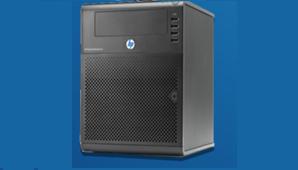Gartner Figures Point To Healthy Server Market

Gartner has confirmed that HP, IBM and Dell are the main players in an increasingly healthy server market
Market researcher Gartner has found that Hewlett-Packard, IBM and Dell continue to lead an increasingly healthy server market, that also saw Unix and mainframe revenue grow.
The overall server market in the first quarter had revenue growth of 17.3 percent – to $12.6 billion (£7.7bn) – and shipment increases of 8.5 percent, to 2.3 million units, according to numbers Gartner released 26 May.
Gartner’s numbers echoed those analyst firm IDC released two days earlier, and showed that HP was again tops in both worldwide server revenue and shipments, with market share of 30.2 percent and 29.8 percent, respectively. IBM was second in revenue and third in shipments; Dell was third in revenue and second in shipments.
Hardware Spend
The x86 server market continued to grow, jumping 8.6 percent in units shipped and 17.5 percent in revenues, according to Gartner. And like their IDC counterparts, Gartner analysts also saw healthier Unix server and mainframe spaces.
 “RISC/Itanium Unix servers finally exited their slump and grew 5.2 percent in shipments and 20.7 percent in vendor revenue, compared with the same quarter last year,” Jeffrey Hewitt, research VP at Gartner, said in a statement. “The ‘other’ CPU category, which is primarily mainframes, showed a growth in vendor revenue of 19.6 percent.”
“RISC/Itanium Unix servers finally exited their slump and grew 5.2 percent in shipments and 20.7 percent in vendor revenue, compared with the same quarter last year,” Jeffrey Hewitt, research VP at Gartner, said in a statement. “The ‘other’ CPU category, which is primarily mainframes, showed a growth in vendor revenue of 19.6 percent.”
In an interview with eWEEK, Jean Bozman, research vice president of enterprise servers at IDC, said the non-x86 server market was hit particularly hard by the recession in 2009, which significantly slowed server purchases. However, with the economy improving and new technology hitting the market – for example, Oracle released its 16-core SPARC T3 chips in September 2010, IBM launched new Power7-based systems last year and HP is putting Intel’s quad-core Itanium 9300 “Tukwila” chips in its high-end Integrity servers – enterprises are beginning to buy hardware again.
“What it shows is that customers are feeling a little more optimistic with IT spending and IT infrastructure, and are building out projects that were put on hold several years ago,” Bozman said, noting the growth in server sales across all industry segments.
In addition, both Gartner and IDC noted that networking giant Cisco Systems, which two years ago entered the server space with its UCS (Unified Computing System) converged data centre offering, is now gaining market share. IDC had Cisco as the third-largest x86 blade server vendor, and seventh-largest server vendor worldwide.
In addition, Gartner has Cisco as the fifth-largest x86 server vendor with more than $194 million (£118m) in revenue in the first quarter – up from more than $35 million (£21m) during the same time last year – and 2.3 percent market share. During the first quarter in 2010, Cisco’s market share was 0.5 percent.
Cisco’s Arrival
“Cisco’s rapid growth [in the x86 blade market] underscores our leadership in the industry transition to fabric computing and converged infrastructure,” Soni Jiandani, VP for Cisco’s UCS business, said in a 24 May blog post.
Cisco’s market numbers underscore the work officials have done to sell their UCS offering, which was created in partnership with the likes of EMC and VMware. The UCS offers a tightly integrated package of servers, storage, networking, virtualisation and management software.
“When Cisco began shipping UCS slightly over two years ago, competitor reaction ranged the gamut from concerned to gleefully dismissive of their chances at success in the server market,” Forrester Research analyst Richard Fichera wrote in a 25 May blog post. “The reasons given for their guaranteed lack of success were a combination of technical (the product won’t really work), the economics (Cisco can’t live on server margins) to cultural (Cisco doesn’t know servers and can’t succeed in a market where they are not the quasi-monopolistic dominating player). … Any lingering doubt about whether Cisco can become a credible supplier has been laid to rest.”
Fichera said Cisco has been reporting “a steady and impressive growth in customers since initial shipment,” and that Forrester has seen “both the significant interest and installed UCS systems” among its clients.
During a 11 May conference call with analysts and journalists to announce the company’s quarterly earnings, Chairman and CEO John Chambers lauded the data centre business, noting that the company now has 5,400 UCS customers and an annual run rate of $900 million (£548m) for UCS product orders. In addition, businesses worldwide shifted 10 percent of their x86 blade spending to the UCS, according to Cisco. That number was 20 percent in the United States.